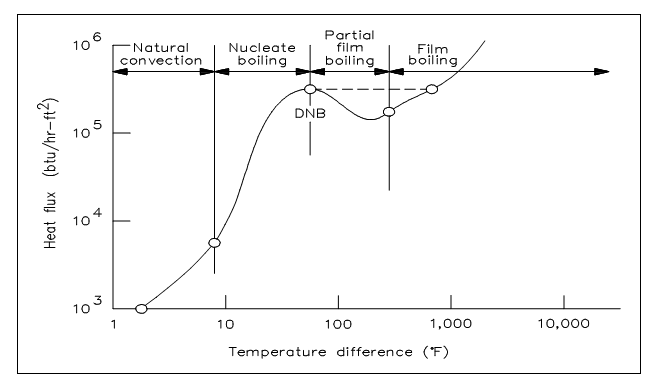Departure from Nucleate Boiling and Critical Heat Flux
In practice, when the heat flux is raised, the transition from nucleate boiling to film boiling takes place rapidly and the temperature difference rises quickly, as shown by the dashed line in the figure shown below. The point of transition from nucleate boiling to film boiling is termed as the point of departure from nucleate boiling, generally written as DNB. The heat flux related with DNB is generally termed as the critical heat flux (CHF). In most of the applications, CHF is a significant parameter.

Figure: Boiling Heat Transfer Curve
For illustration, in a reactor, when the critical heat flux is surpassed and DNB takes place at any position in the core, the temperature difference needed to transfer the heat being generated from the surface of the fuel rod to the reactor coolant rises greatly. When, as could be the situation, the temperature rise causes the fuel rod to surpass its design limits, a failure will take place.
The quantity of heat transfer by convection can only be established after the local heat transfer coefficient is established. Such determination should be depending on available experimental data. After experimental data has been connected by dimensional analysis, it is a common practice to write an equation for the curve which has been drawn via the data and to compare experimental outcomes with those acquired by the analytical means. In the application of any empirical equation for required convection to practical problems, it is significant for the student to bear in mind that the expected values of heat transfer coefficient are not correct. The values of heat transfer coefficients employed by students might vary considerably from one student to the other, based on what source "book" the student has employed to acquire the information. In turbulent and laminar flow, the precision of a heat transfer coefficient expected from any available equation or graph might be no better than 30 percent.